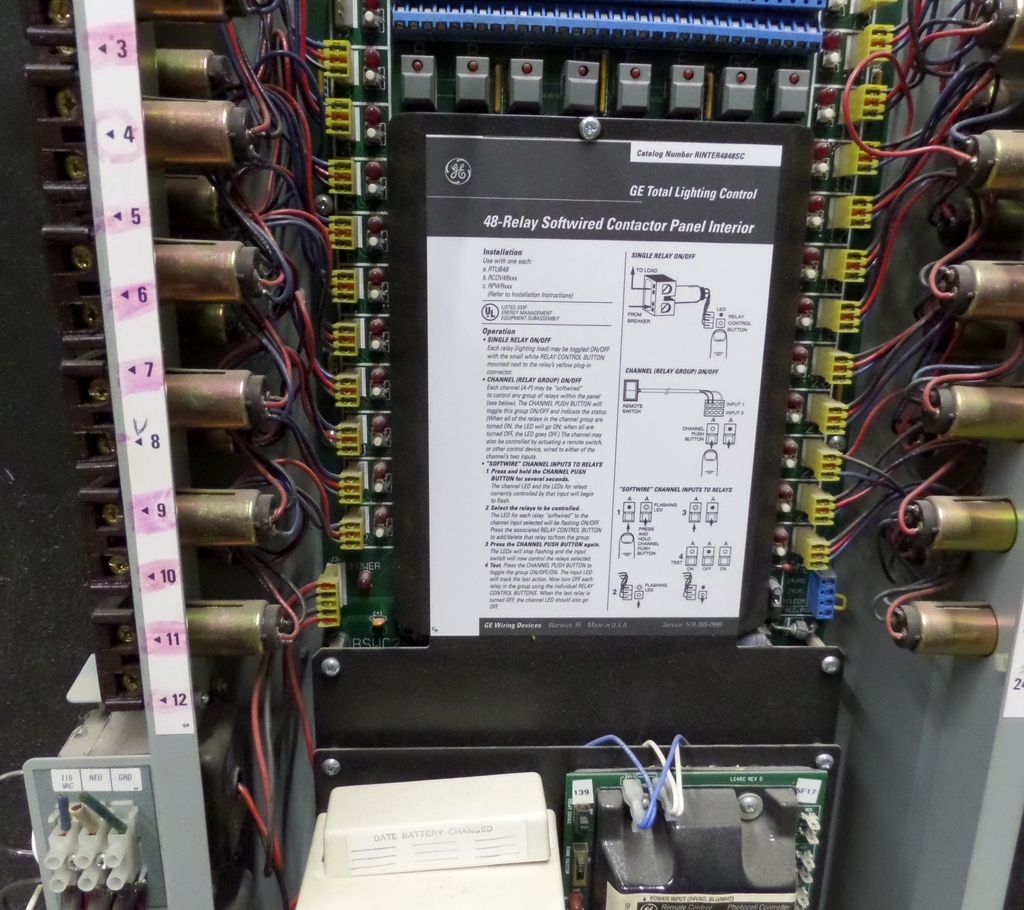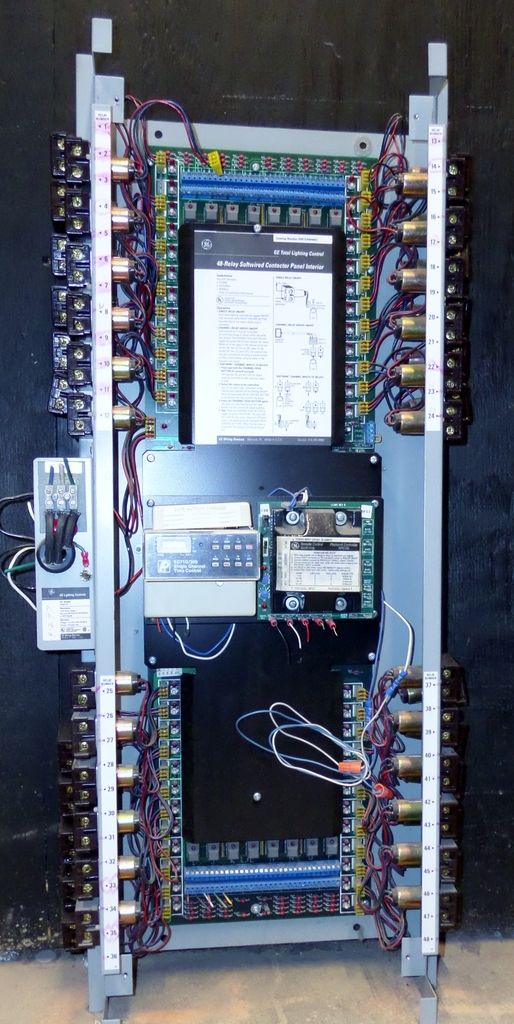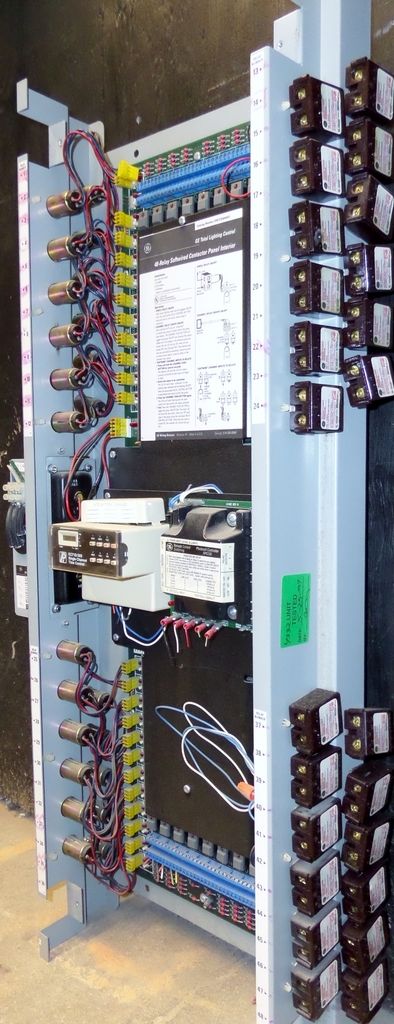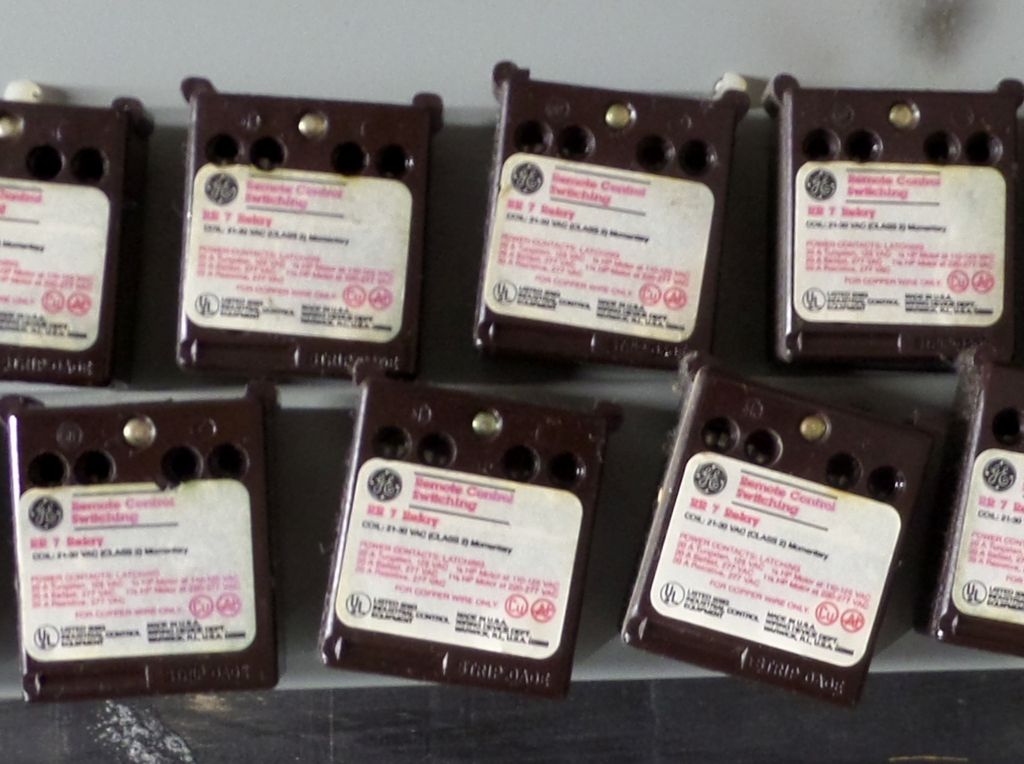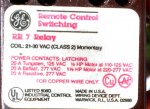Good to see others still have the GE relays. Nothing like having 16 (or unlimited) way switches and central lighting control !
Built out house in 1971. Have over 60 ea RR3 relays and a few hundred switches.
Have had only had 2 RR3 failures (stuck in one position), both were outside where there was possibility of condensation, and both within the last 5 years.
Have had to 'scotchbrite' 10 or so of the switches, as 45 years of oxidation made for a few poor contacts.
Have 3 master control panels, where a single switch can control ALL, all upstairs, all outside, etc. lighting plus rotary selector switch.
The way I worked it (no code prohibitions that I could see, still a class II transformer only power) was to full wave rectify the 24 Vac, charge a few 18,000uF capacitors at each main control panel, and a single 30A momentary contact switch used to drive all relays at the same time for the 'all lights' control - 120 diodes feed individual RR3 relay feeds for each main control switch. Never did think the old GE motor driven switch was worth much, never used one of those.
Individual control maintained with about a thousand or so logic diodes. Having the central control stations could easily interconnect to computer or even ipad control if I ever get ambitious.
Was able to use surplus 52 pair telephone cable for most of the RR3 feed runs.
I did NOT use a central relay panel, each RR3 relay at the controlled fixture or outlet, they snap into the metal box knockouts.
IIRC RR3 relays were abut $3 each back in '71, still close to a half-hours pay then per relay.
edit: note for the young guys about telephone cable and 'free' availability:
back in the 'ma bell' monopoly era, when the ATT guys did a wire run in one of the factory buildings, they literally threw a few hundred feet at a time of pulled 50 pair cable into the nearest trash can. Copper cheap then, ATT had no incentive to save, etc. Recall about the mid 70's as inflation took off ATT started to put the old wire into a bag to recycle. Company electricians would dump a few dozen feet of thhn into trash barrels also, good source of materials for kids just starting out. Have not seen more than a few feet at a time of wire in a trash bbl for a couple of decades.

